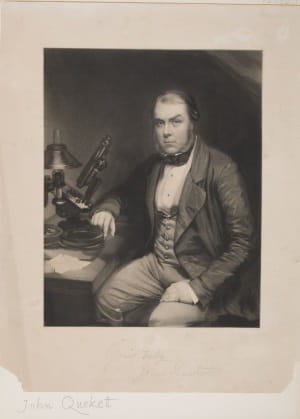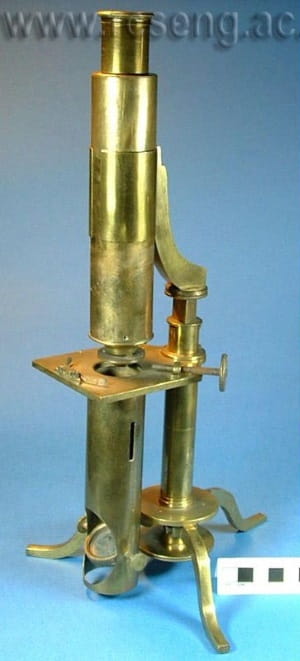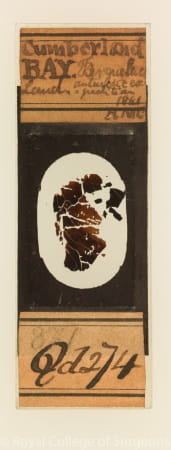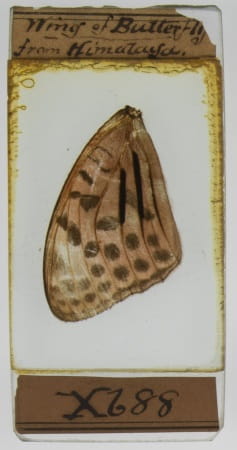John Thomas Quekett (1815-1861)
10 Aug 2019
Geraldine O’Driscoll

The Royal Microscopical Society was founded in 1839 in the house of Quekett’s brother Edwin, and John was Secretary of the society from 1841-1860. A new society in London was later named the Quekett Microscopical Club in his honour.
Quekett won a three-year studentship in human and comparative anatomy at the Royal College of Surgeons of England, and it was during this period that he made his microscopical preparations. He was appointed Assistant Conservator of the Hunterian Museum in 1843, and then Conservator when Richard Owen moved to the British Museum, in 1856.

After his death his possessions, including microscopes and other scientific equipment, were auctioned, and an annuity was paid to his widow by the College, with a fund being set up to assist his family.
His publications included:
- A Practical Treatise on the Use of the Microscope, … (London, 1848)
- Descriptive and illustrated catalogue of the Histological Series contained in the Museum of the Royal College, etc. Vol. 1. Elementary tissues of vegetables and animals [By J T Duckett] (London, 1850)
- Lectures on Histology … Elementary Tissues of Plants and Animals … Illustrated by woodcuts 2 vol (London, 1852-54)
- Lectures of Histology Vol 11 structure of the skeleton of plants and invertebrate animals (Bailliere 1854)
For more information on Quekett, see our previous posts: Professor Quekett and the Curious Case of the Coal slides, Imaging Quekett’s bone slides: the origin of specimens, A Very Large Collection of Very Small Things and Quekett and Exploration.
Geraldine O’Driscoll, Library & Archives Assistant



